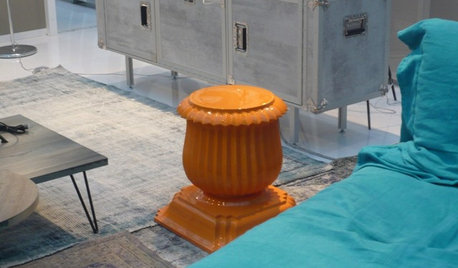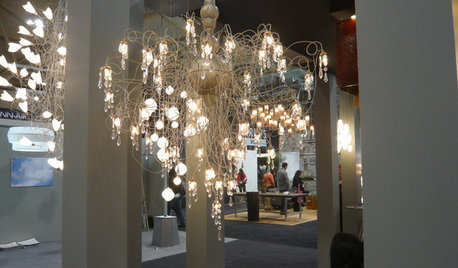News to me...
seedmoney
12 years ago
Related Stories

ARTShow News: Rare Quilts Get Museum Time
See 6 intricate designs from a California exhibition and get tips for building your own quilt collection
Full Story
KITCHEN DESIGNSpecial Report: Kitchen News from Cologne
Blended Kitchen-Living Rooms, Super-Skinny Counters and Hidden Appliances Are Headed This Way
Full Story
Special Report: Interior Design News From Cologne
Take a Photo Tour of the Latest Furniture Innovations Headed Our Way
Full Story
Minimalist Home in Spain Wins World Architecture News Award
An unadorned house in an ancient Catalonian district catches the attention of the jury panel for its minimalist interior design
Full Story
REMODELING GUIDESHouzz News: Remodeling Heats Up
With the U.S. economy showing signs of recovery, homeowners invest in quality, livability and "a place to make their own"
Full Story
DECORATING GUIDESSpecial Report: Design News from Toronto
See playful color, fur pendants, ornate chandeliers, dark wood and more at the 2011 Toronto Interior Design Show
Full Story

COLORColor Me Dazzled: The Saguaro Hotel in Palm Springs
No dusty neutrals for this desert hideaway — The Saguaro hotel revels in electrifying color from every arc of the rainbow
Full Story
BATHROOM DESIGNSpecial Report: Bath Trends From Valencia
Spain Design News: Minimal Sinks, Stacked Vanities — and Modern Glam
Full Story
DECORATING GUIDES10 Ways to Go Dark in a Contemporary Kitchen
Moody is big news in kitchen design. Find inspiration with these interpretations
Full StoryMore Discussions







runmede
Related Professionals
Redondo Beach Landscape Architects & Landscape Designers · Gainesville Landscape Contractors · North Plainfield Landscape Contractors · Whittier Landscape Contractors · Antioch Fence Contractors · Naperville Fence Contractors · Sandy Fence Contractors · South San Francisco Fence Contractors · Wauconda Fence Contractors · Wilmette Fence Contractors · Marietta Window Contractors · Goulds Window Contractors · Huntley Window Contractors · Naples Window Contractors · Westmont Window Contractors